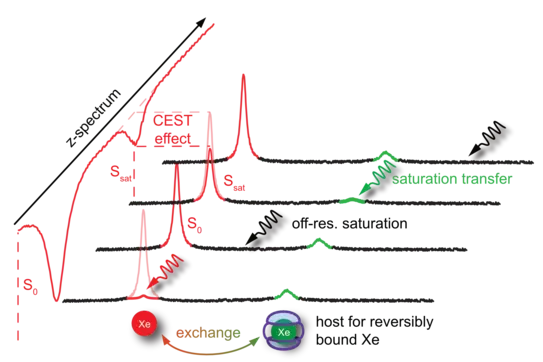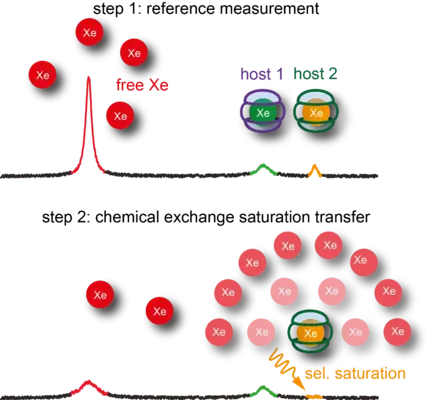Hyper-CEST
Signal amplification by CEST is an indirect, two-dimensional detection scheme for xenon in biosensors that exploits the exchange of the noble gas between the unbound Xe and the Xe temporarily trapped in the biosensor molecule: selective radiofrequency pulses mark the biosensor magnetization of the temporarily bound Xe spins and transfer this information via chemical exchange to freely dissolved Xe, which is used to create the MRI image.


This method combines two types of signal amplification and thus leads to an enormous increase in sensitivity. This shortens the measurement time by several orders of magnitude. Concentrations in the nanomolar range can be displayed in MRI images within 100 seconds. With conventional MR methods, this would take over 1100 years - the measurement would have had to begin in the time of Charlemagne. The contrast for the sensor distribution can be switched on and off via the MR pulse sequence parameters.
